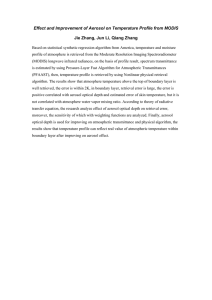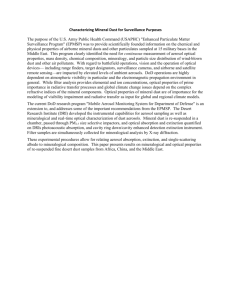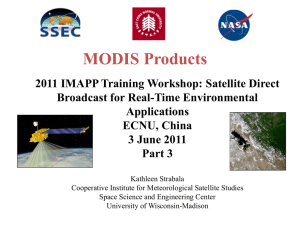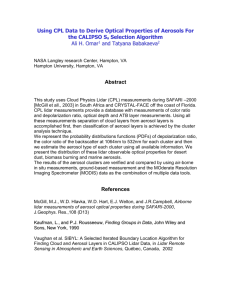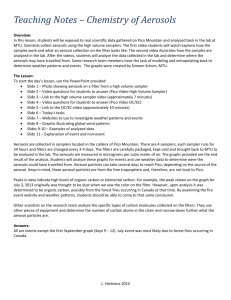PM2.5 Sourcing: A Multi-System Geochemical Approach for
advertisement
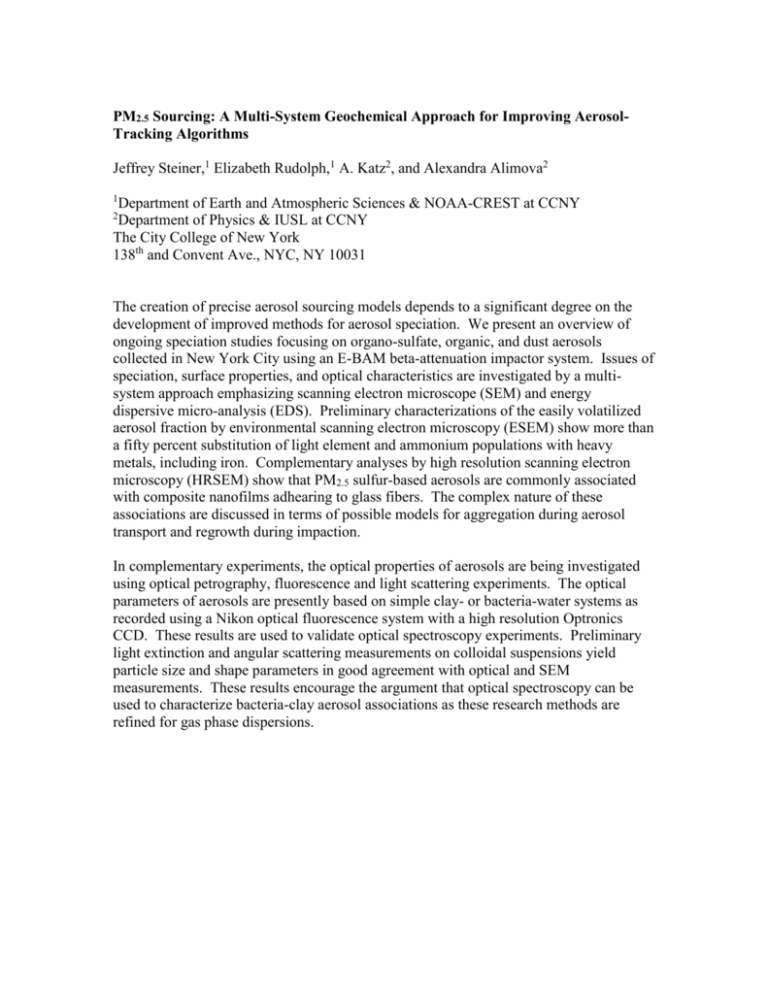
PM2.5 Sourcing: A Multi-System Geochemical Approach for Improving AerosolTracking Algorithms Jeffrey Steiner,1 Elizabeth Rudolph,1 A. Katz2, and Alexandra Alimova2 1 Department of Earth and Atmospheric Sciences & NOAA-CREST at CCNY Department of Physics & IUSL at CCNY The City College of New York 138th and Convent Ave., NYC, NY 10031 2 The creation of precise aerosol sourcing models depends to a significant degree on the development of improved methods for aerosol speciation. We present an overview of ongoing speciation studies focusing on organo-sulfate, organic, and dust aerosols collected in New York City using an E-BAM beta-attenuation impactor system. Issues of speciation, surface properties, and optical characteristics are investigated by a multisystem approach emphasizing scanning electron microscope (SEM) and energy dispersive micro-analysis (EDS). Preliminary characterizations of the easily volatilized aerosol fraction by environmental scanning electron microscopy (ESEM) show more than a fifty percent substitution of light element and ammonium populations with heavy metals, including iron. Complementary analyses by high resolution scanning electron microscopy (HRSEM) show that PM2.5 sulfur-based aerosols are commonly associated with composite nanofilms adhearing to glass fibers. The complex nature of these associations are discussed in terms of possible models for aggregation during aerosol transport and regrowth during impaction. In complementary experiments, the optical properties of aerosols are being investigated using optical petrography, fluorescence and light scattering experiments. The optical parameters of aerosols are presently based on simple clay- or bacteria-water systems as recorded using a Nikon optical fluorescence system with a high resolution Optronics CCD. These results are used to validate optical spectroscopy experiments. Preliminary light extinction and angular scattering measurements on colloidal suspensions yield particle size and shape parameters in good agreement with optical and SEM measurements. These results encourage the argument that optical spectroscopy can be used to characterize bacteria-clay aerosol associations as these research methods are refined for gas phase dispersions.
